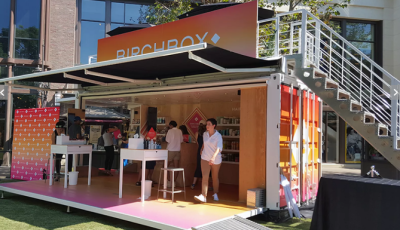In today’s competitive retail environment, pop-up shops are all the rage, granting shoppers an inside look at their favorite products and the chance to forge deeper brand relationships through unique experiences. From fragrance labs to art installations, pop-up shops — i.e., short-term sales and experiential spaces that serve as real-world brand activations — have already seen massive success and show no signs of slowing down. In a sea of competition, pop-up shops are a great way for retailers to cut through the noise and drive brand consideration, especially around a popular event or during the holiday shopping season. Here are key considerations for retailers interested in elevating their brand through a pop-up shop.
Know Your Goals
Whether you specialize in shoes or consumer tech, pop-ups can help your brand reach a wide range of goals, from testing different markets to showcasing a new line of products. However, while retailers can draw inspiration from other pop-ups, they must approach their own experiences with specific objectives for their company in mind. After all, the goals for brick-and-mortar retailers are different than those for e-commerce retailers.
Ultimately, brick-and-mortar retailers should generate pop-ups that spur an overall increase in store traffic. A thoughtfully designed and immersive experience will foster brand awareness, encouraging consumers to visit established store locations in the future. At the same time, brick-and-mortar retailers should seize the opportunity to increase digital sales. Try offering visitors an exclusive coupon they can redeem online. This not only drives digital engagement, but also serves as a great way reward for pop-up shoppers. An overwhelming 75 percent of consumers want to be rewarded for their everyday behaviors, not just when they purchase. Therefore, incorporating ways to reward them beyond the pop-up experience is key.
E-commerce brands, on the other hand, should make their product the star of the show, as consumers rarely get to interact with goods in real life prior to purchasing. Take lifestyle brand FabFitFun, for example. The subscription box retailer built a physical pop-up where consumers were able to curate their own box and, in turn, experience the product in a more impactful way.
Know Your Audience
No matter what your pop-up experience, boosting ongoing loyalty should remain a priority. Successful pop-ups bolster long-term connections to brands.
Consider drawing customers in with a sneak peek at an upcoming product line, or host an invitation on your brand’s app to open another engagement channel with consumers. Additionally, think of any partnerships you can leverage to enhance the pop-up experience for your shoppers. For brands, partnerships provide an opportunity to cut costs. For consumers, smart partnerships, like Microsoft and Taco Bell’s one-of-a-kind arcade, elevate the pop-up experience by generating a special event that can’t be had anywhere else.
Incorporate Cutting-Edge Technology
Pop-ups also allow retailers to highlight their digital capabilities or experiment with technologies that aren’t yet ready to be implemented across locations. Bringing emerging technology such as instant checkout, augmented reality and smart mirrors to life through a pop-up shop re-energizes and often personalizes the retail experience. Furthermore, it’s a great way to convey your company’s vision of the future.
J.C. Penney recently experimented with virtual reality to extend its two-day, luxury holiday pop-up shop and reach a wider audience. Though the physical store was temporary, J.C. Penney created an online replica that gave consumers everywhere the chance to continue browsing the actual pop-up from their laptops. Beyond adding a digital component to the experience, this virtual reality shop also gave J.C. Penney the ability to track site visits and easily gauge the success of the pop-up.
Personalize the Experience
Finally, retailers shouldn’t be afraid to think outside the box when devising immersive experiences. For instance, Yankee Candle opened a holiday pop-up shop in New York City centered on the five senses. Powered by the idea of experiential shopping, this pop-up gave consumers the ability to create and personalize their own candles, sample smells, test their fragrance knowledge, and purchase exclusive limited-edition NYC-themed candles.
Perhaps clothing brands can invite consumers to customize their jeans with iron-on patches that are branded or relevant to your pop-up’s theme. Or maybe your pop-up features Polaroid pictures branded with your company logo or hashtag. Don’t steer away from the latest craze. Instead, figure out what consumers are buzzing about and embrace these fads to make your pop-up current.
No idea is too big when it comes to creating a fresh pop-up shop that drives excitement among consumers. When planning, set tailored goals and identify strategic ways to build brand loyalty. And when it comes to the experience on-site, go digital and make the event a personalized one that visitors won’t soon forget.
Meghan Holmes is vice president of strategy and insights at HelloWorld, a rich engagement platform that empowers marketers to motivate and measure consumer behavior through promotions, loyalty solutions and mobile messaging.
